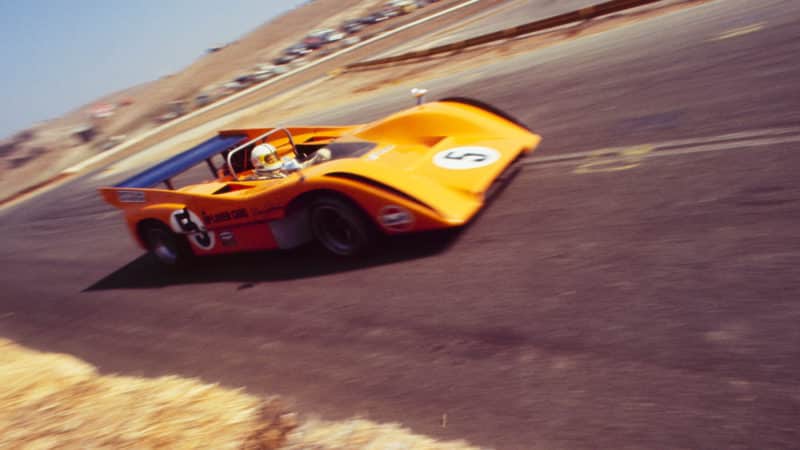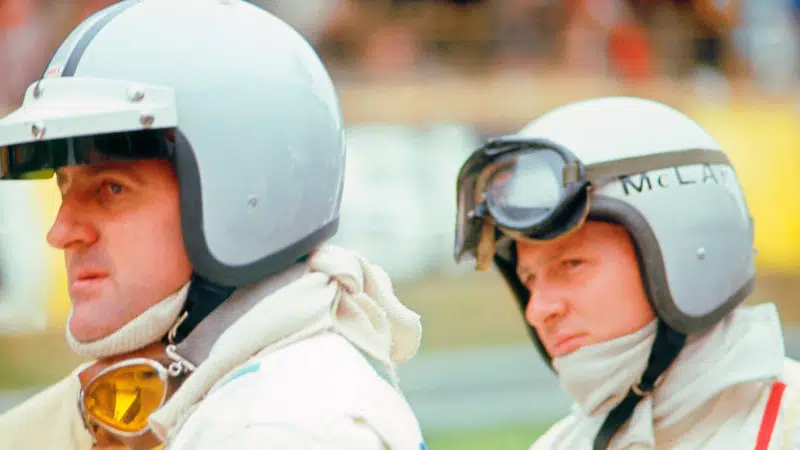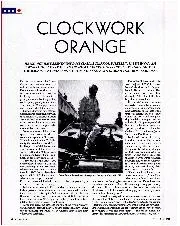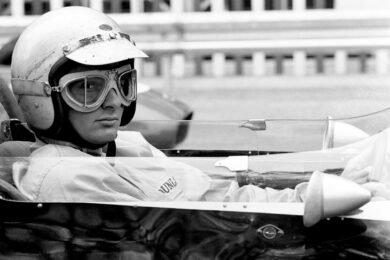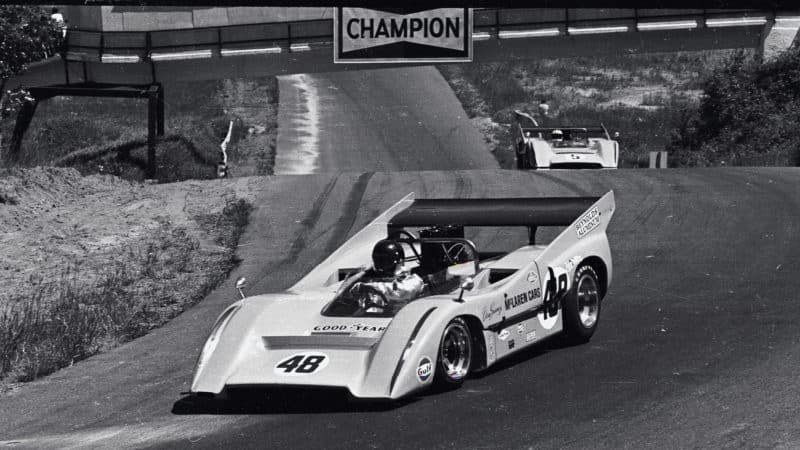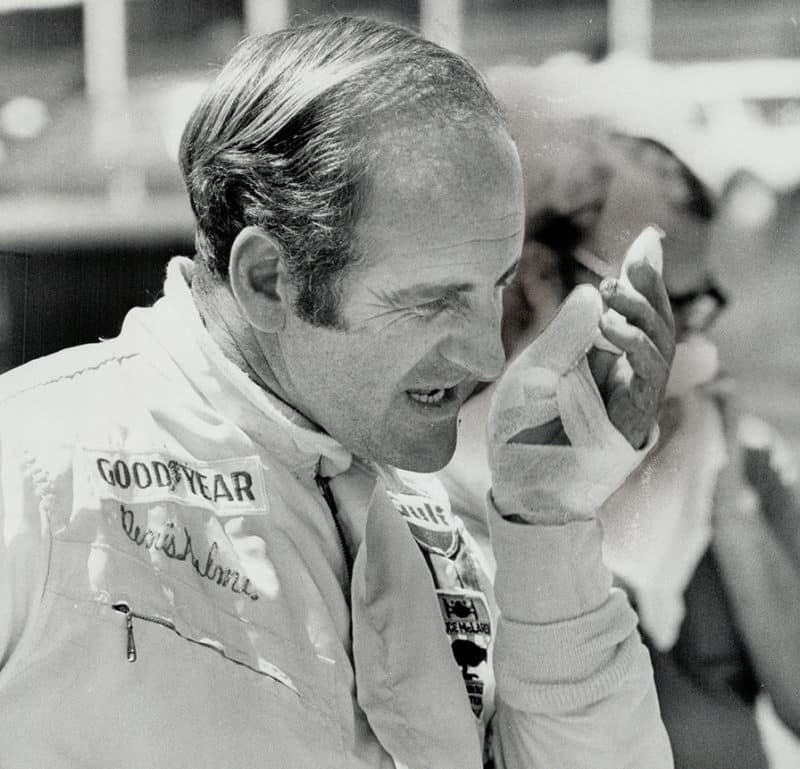I worked quite closely with him, and, despite his often cantankerous mien, in time I was proud to call him a friend. Towards the end of his life, after he had had a stroke, which had compromised his concentration and memory, he was looked after by his loving partner Jane Nottage, in a house near Ascot, Berkshire, that Ron Dennis had made available. Oddly, and I hope unknown to the ever-fastidious Ron, rats used to gambol in its garden. Tyler used to point at them, chuckling. I visited him there a few times, and we always used to go through his photo collection together, for Tyler was and had always been a great amateur photographer. If you can find a copy of McLaren from the Inside: Photographs by Tyler Alexander, buy it. It is a visual celebration of one man’s inside line on a golden age of motor racing.
When Bruce died, Tyler was in Indianapolis, for the Indy 500 had taken place just three days before, and in the great race McLaren had run two Offy-engined M15s for Peter Revson, soon to become a member of the motor sport glitterati, and the less successful and now-forgotten Carl Williams. One day, before he had had his stroke, I asked Tyler to tell me about that time. We were in my office, and we had a coffee each, despite Ron’s ‘no coffee in the offices’ rule. Tyler was in talkative mood, which was not always the case, but today he warmed to his theme.
“We all kind of assumed the dream was over. After all, Bruce was McLaren”
“I was having breakfast at a hotel in Indianapolis. Denny had had a testing shunt at Indy, before the big race, and his hands had been painfully burned, so I was already a bit concerned about that. As I was sitting there having my breakfast, there was a Tannoy message: ‘Phone call for Mr Tyler Alexander’. So I got up, walked to the reception desk, and took the call. It was Teddy [Mayer, Bruce McLaren’s number-two]. He told me that Bruce had bought the farm [a common euphemism among racing folk back then] at Goodwood that day.
“I flew straight to England. I phoned up a few of the boys, and I asked them what they were going to do. Some of them said they might try to get a job at [nearby] Brabham’s or Cooper’s. Others wondered whether their wives would let them move to Norfolk, if Colin Chapman needed anyone at Lotus. We all kind of assumed the dream was over. After all, Bruce was McLaren. He wasn’t only our boss. He was our leader, our mentor, our friend. Now that Bruce had gone, we all kind of assumed that McLaren was gone, too.
“Anyway, despite that, I decided to go into the workshop. When I got there, I found that others had had the same idea. ‘What are you doing here?’ I asked them. ‘I don’t know. It just seemed the right place to be,’ they said.
